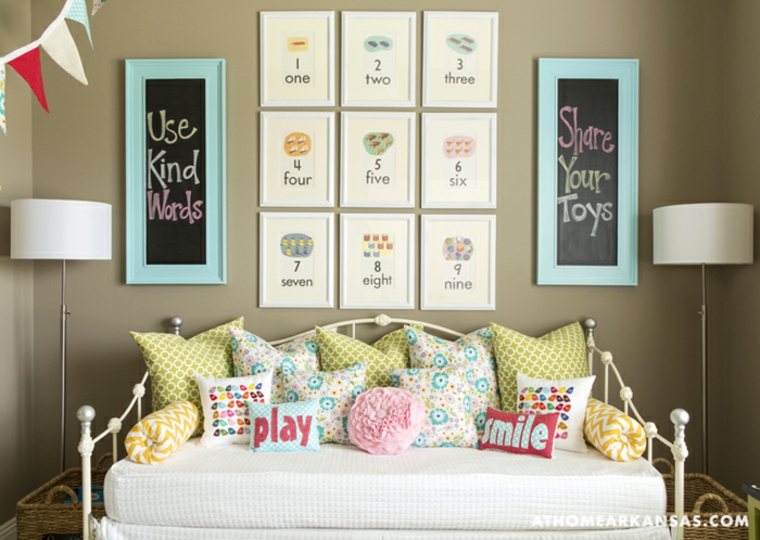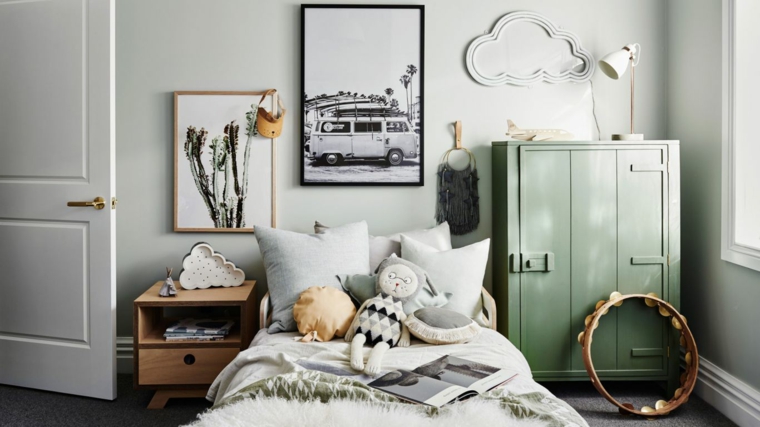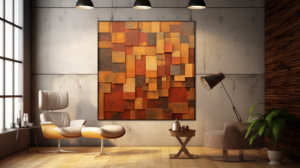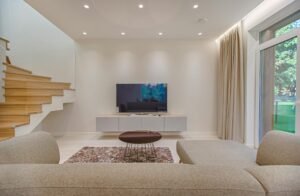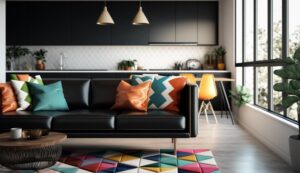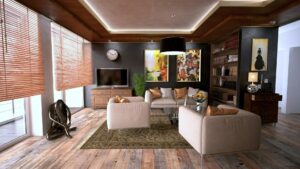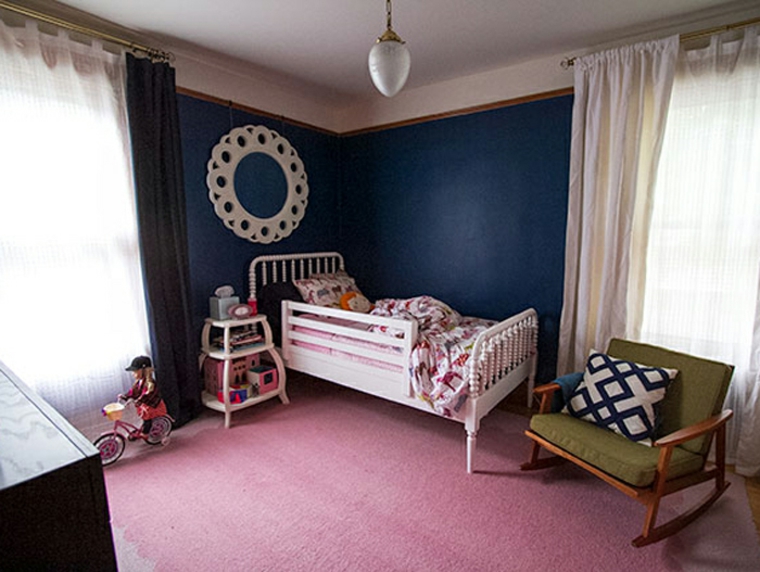
Discover the best ways to design your children’s nursery bedrooms to be functional, fabulous, and made to grow with them.
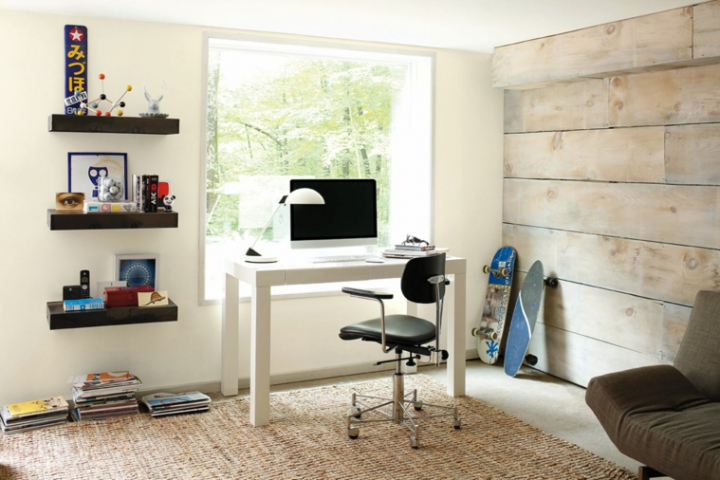
Designing a room is quite simple, but designing children’s bedrooms is a completely different thing. Although it should be a fun project and from a very young age your ideas will be on the list of requirements. In addition, long-term planning is also key to success.
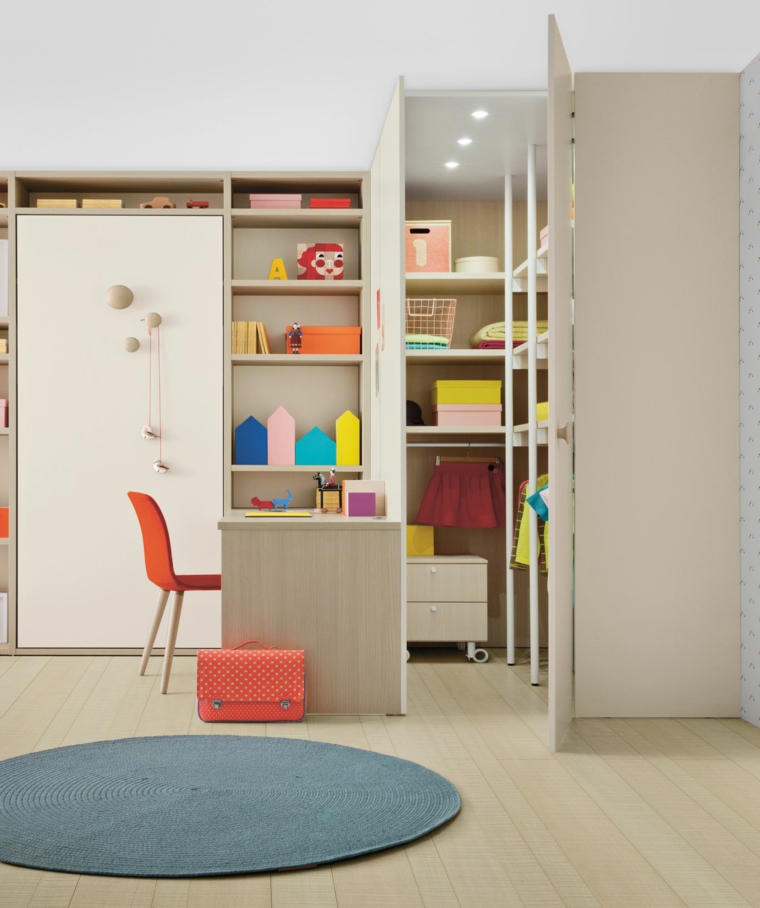
It is really worth making a design and decoration plan with the furniture that compose it, which will last, or at least need to be remodeled every five years. This level of planning will help keep your budget from being too wasteful and help you avoid costly mistakes.
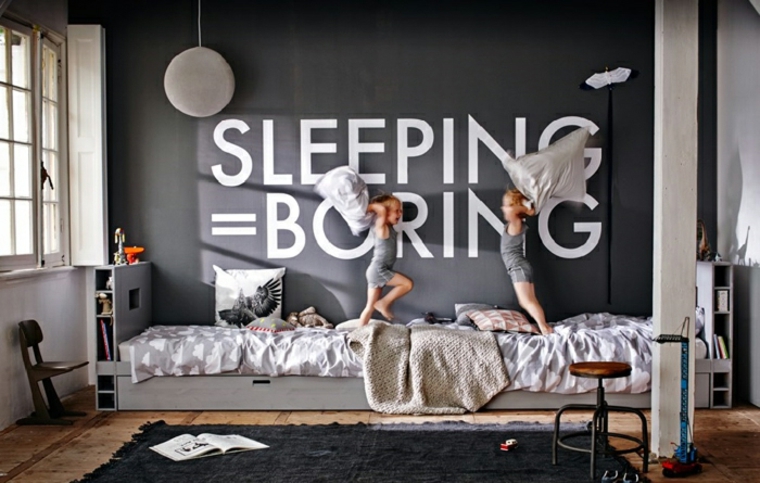
Knowing more about everything related to children’s bedroom design can be a useful first step, especially since we have so many inspiring ideas.
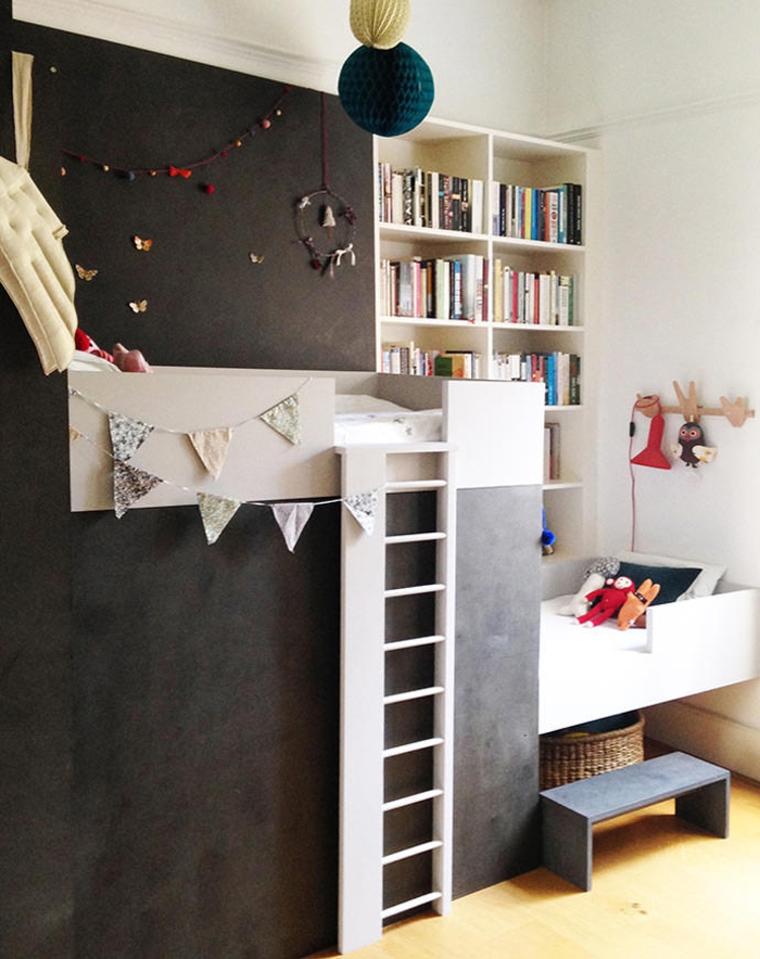
Children’s bedrooms. Where to start with design
Of course, children’s needs and tastes will change, and room swaps between siblings or even with you could occur if new family members arrive and the number of people in the household grows. However, if you plan intelligently each of the ingredients in the room, you will discover that many of them can be used in the future and in many different situations.
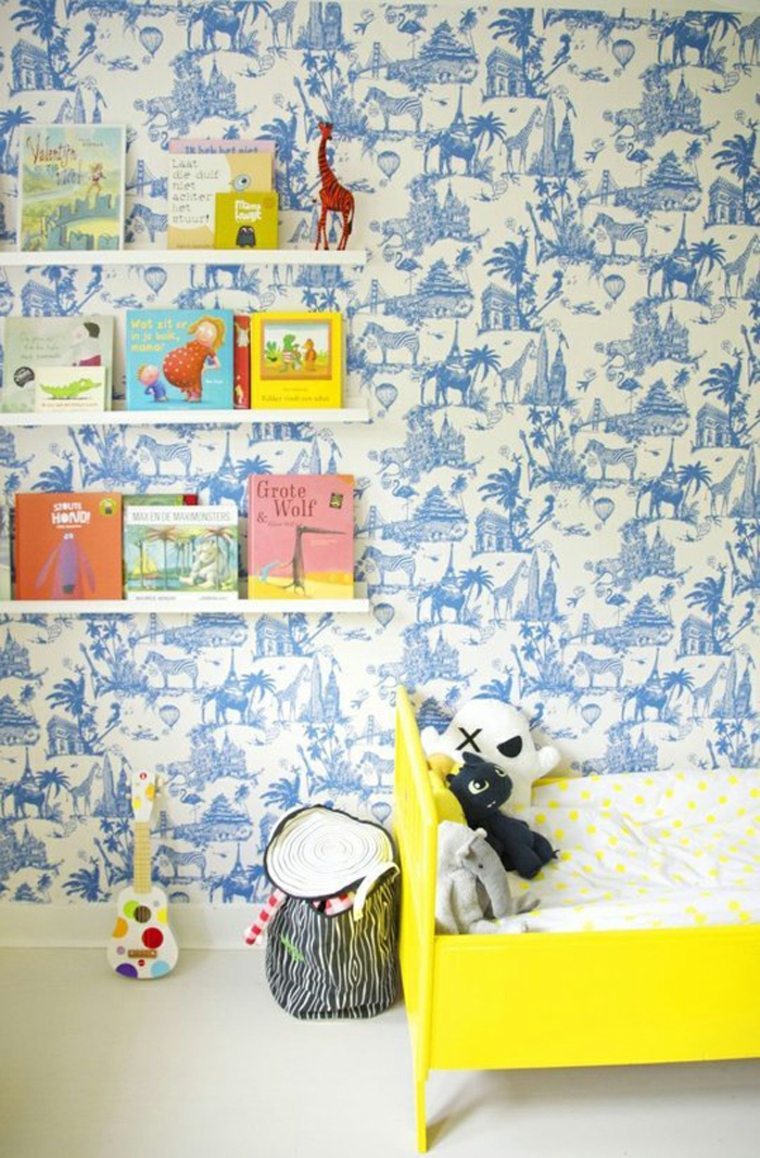
Read our article a and we will guide you through all the steps necessary to create a flexible bedroom that is a success for children and for you. Also take a look at kids bedroom design ideas and small kids room design ideas for tons of inspiring ideas to copy.
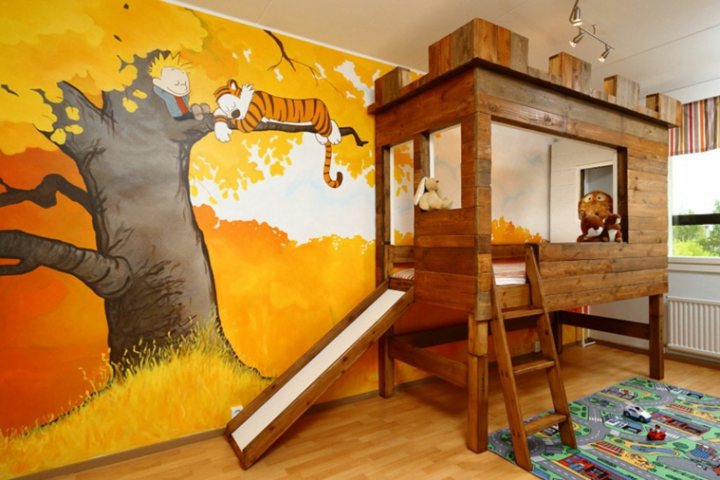
How to choose paint for children’s bedrooms?
Before you think about paint color ideas for your nursery bedrooms, think about the type of paint you are going to use:
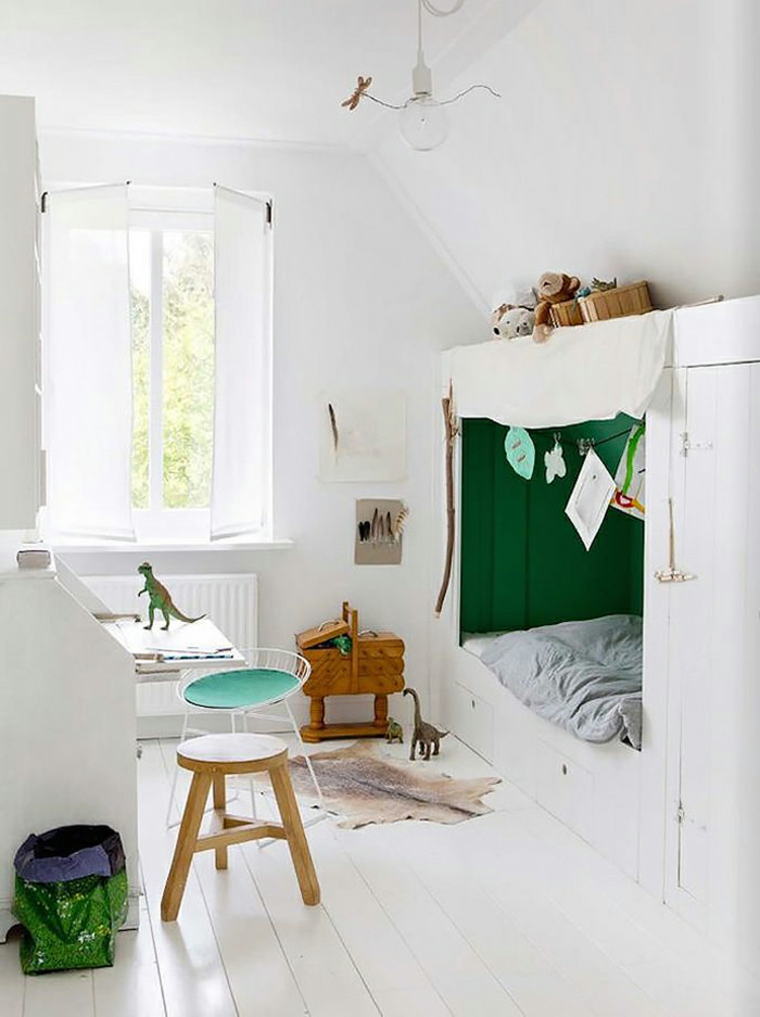
Matte paint will create a flat finish. Look for washable versions instead of using traditional matte paints to keep walls looking good for longer.
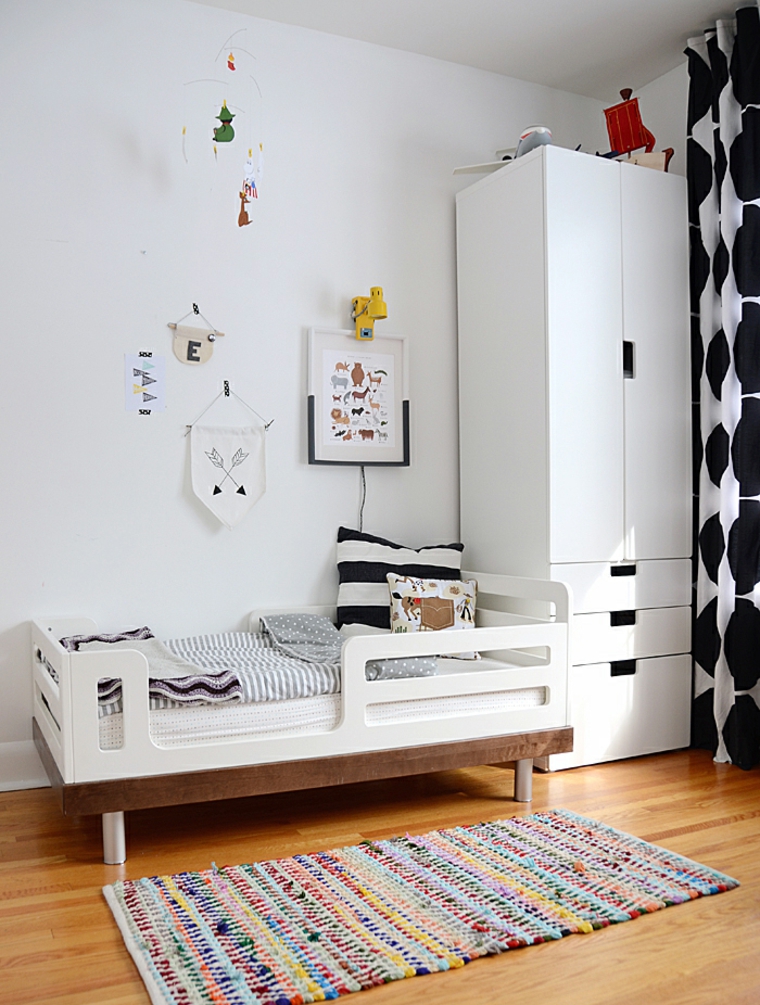
If you want a finish that is more resistant to stains and scuffs, opt for paints that can be cleaned.
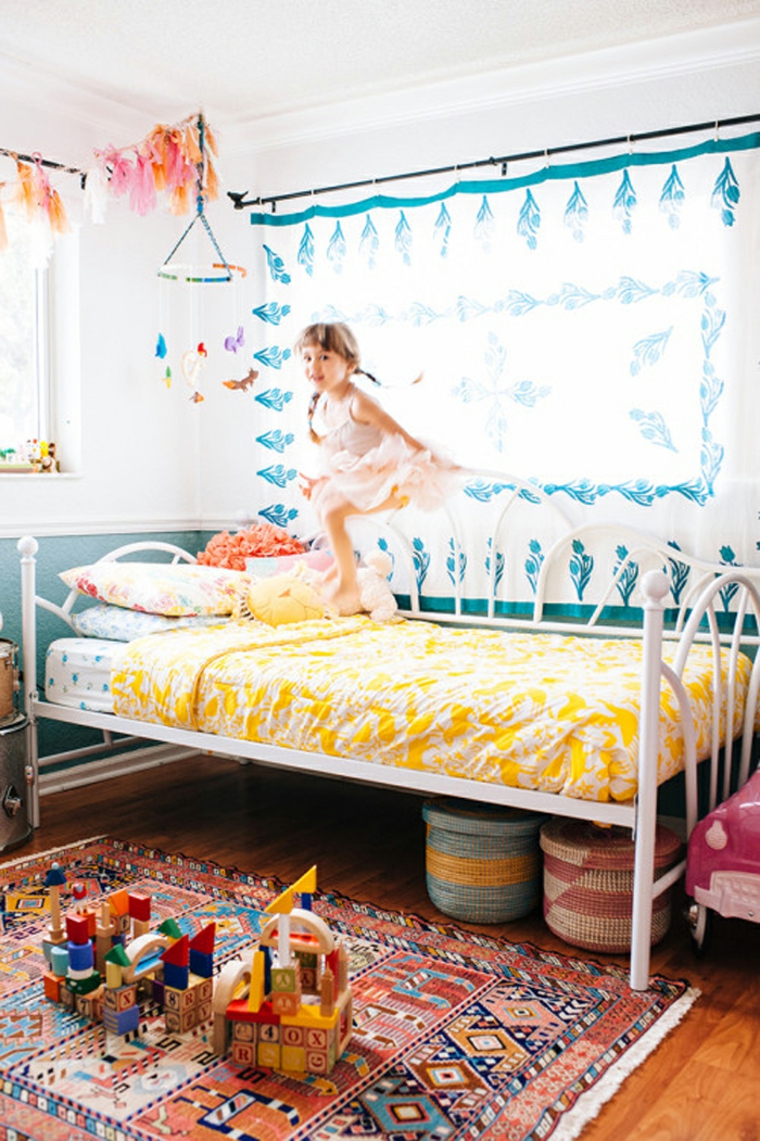
Chalkboard paint can be a big hit in children’s bedrooms. Use it in an area the size of a bulletin board, or even an entire wall.
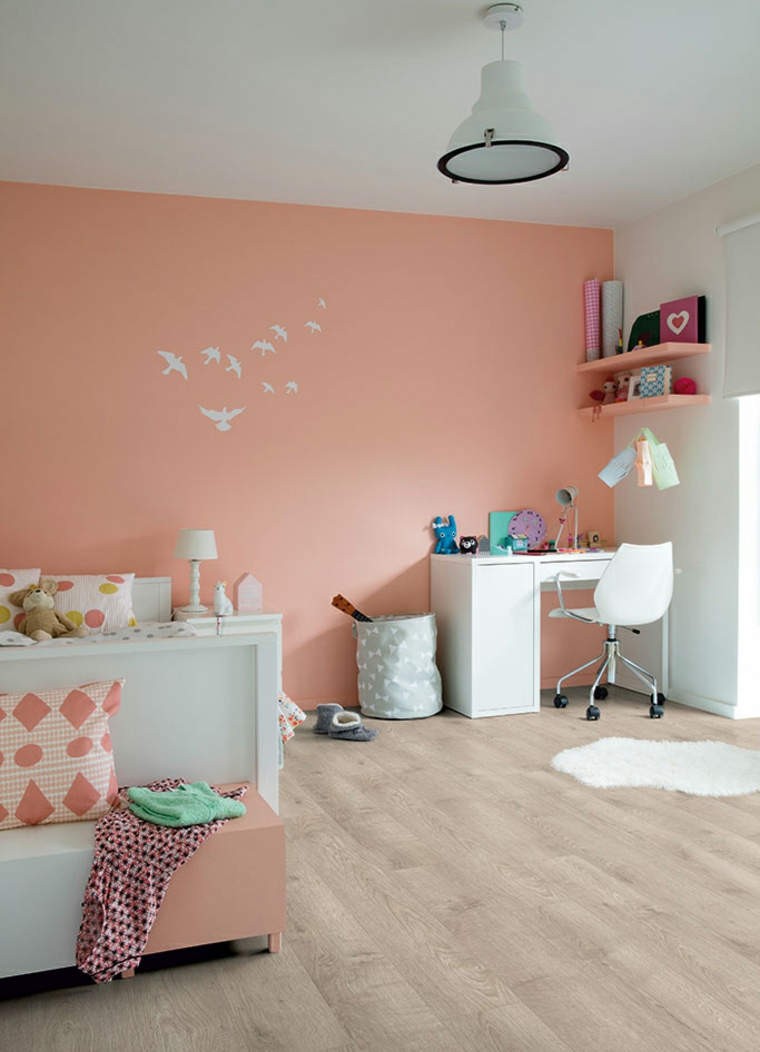
Non-fuming (low VOC) paints or long-lasting paints are the most sought after.
When it comes to color, painted walls have the advantage of being relatively quick and easy to update in the future. However, keep in mind that the darker the shade, the more difficult it will be to change color.
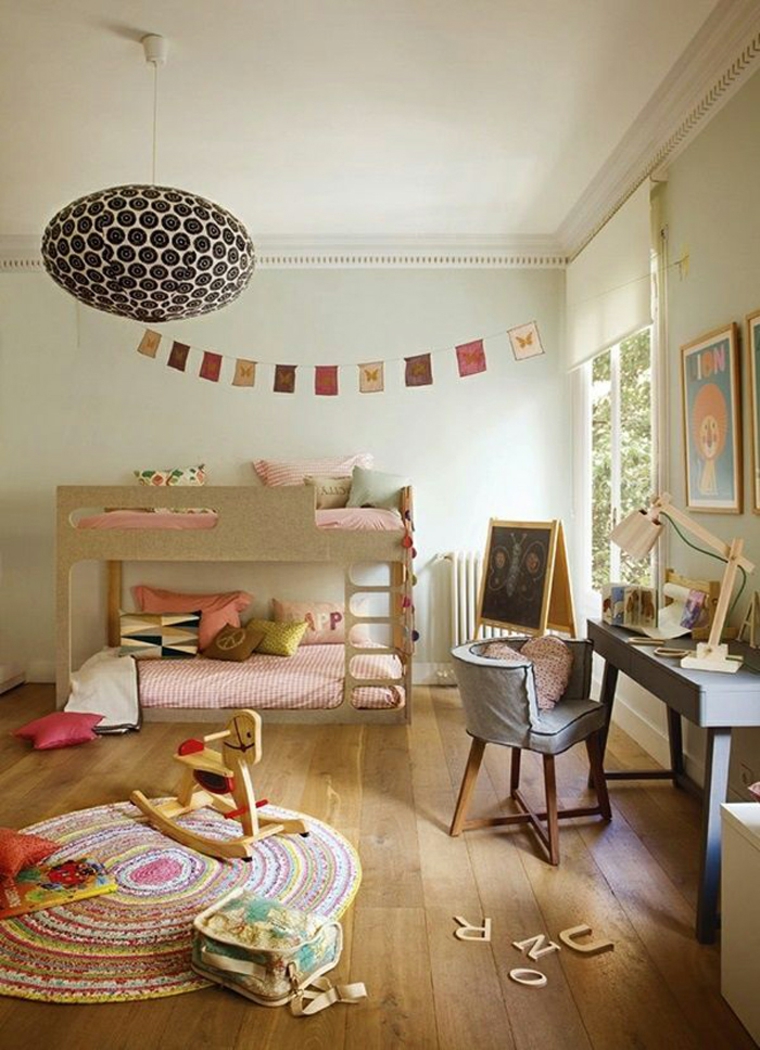
The colorful paint will give the room a personal touch that children will love. However, keep in mind that if they ask for a certain shade but already have bedding and accent accessories in the same shade, they won’t stand out against the walls. A bold color may not work harmoniously when the next passion appears. An alternative is to try using a more sophisticated color in the design, for example raspberry or amethyst instead of pink.
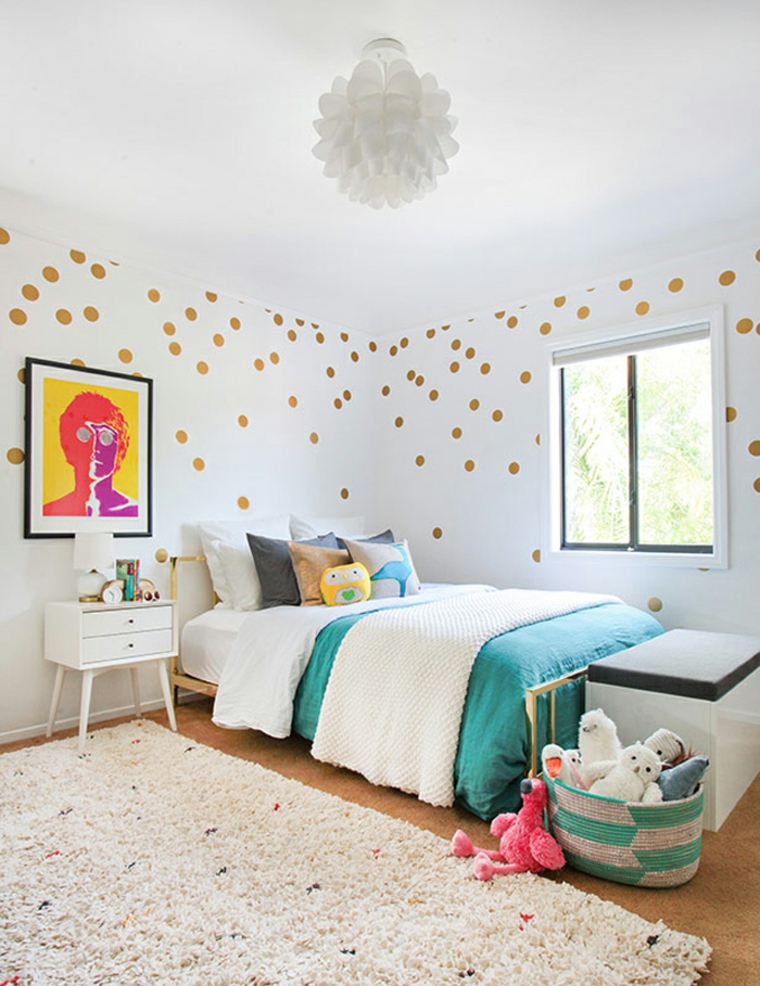
Neutral paints have the advantage of longevity and can make future child bedroom swaps faster, as there will be no need to change the color to suit the new occupant. But don’t forget that pale tones, while a flexible background for colorful accessories, stain more easily, so cleaning, touch-ups, and complete decoration will be more frequent.
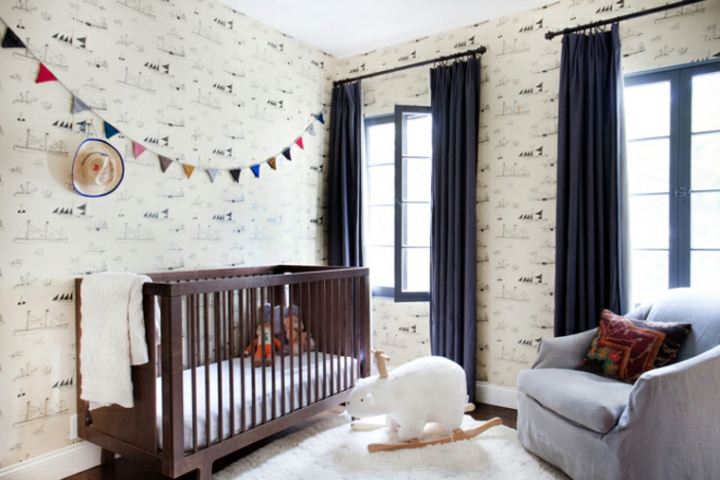
Wall decoration in children’s bedrooms
Wallpaper is another option worth considering if you want to design children’s bedrooms with a lot of personality. Many children’s tapestry cloths are bold and colorful so don’t feel compelled to use one on all four walls if it’s going to look overwhelming or makes the room feel too small. Instead, try sticking it to just one wall or two.
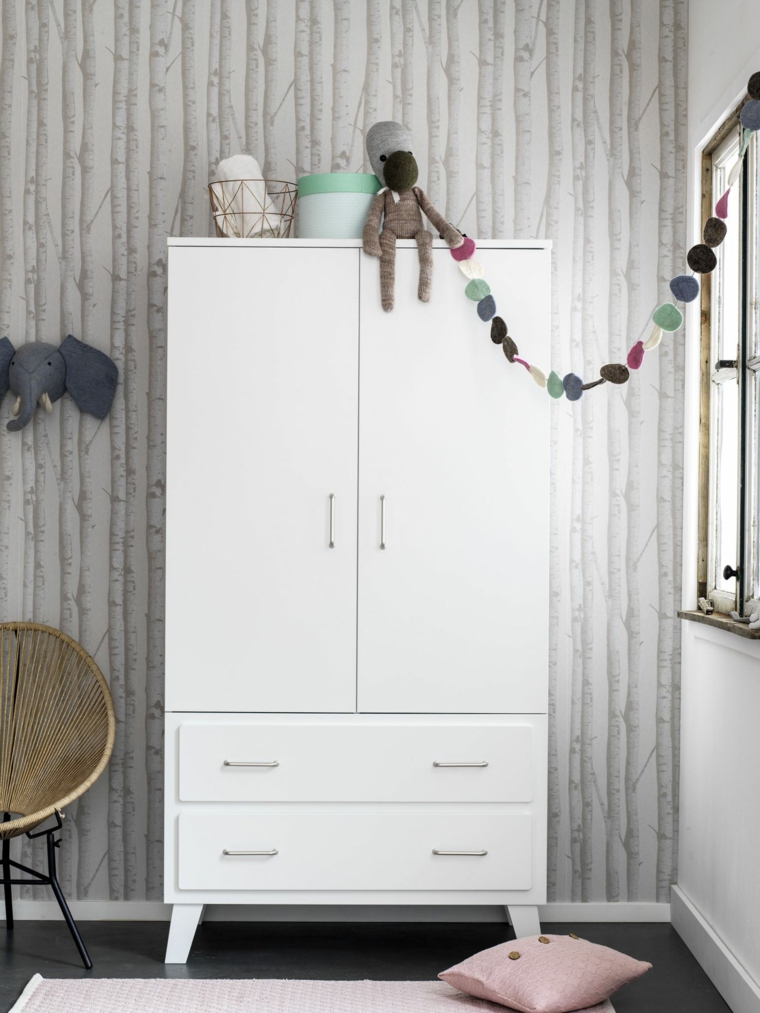
Don’t limit yourself to dedicated kid-only wallpaper either. Patterns that include geometric shapes can look great in children’s bedrooms and usually come in a range of colors from bold to more subtle hues to suit the age of the room owner. For example, gray wallpaper in an interesting pattern offers a bright background for an evolving scheme.
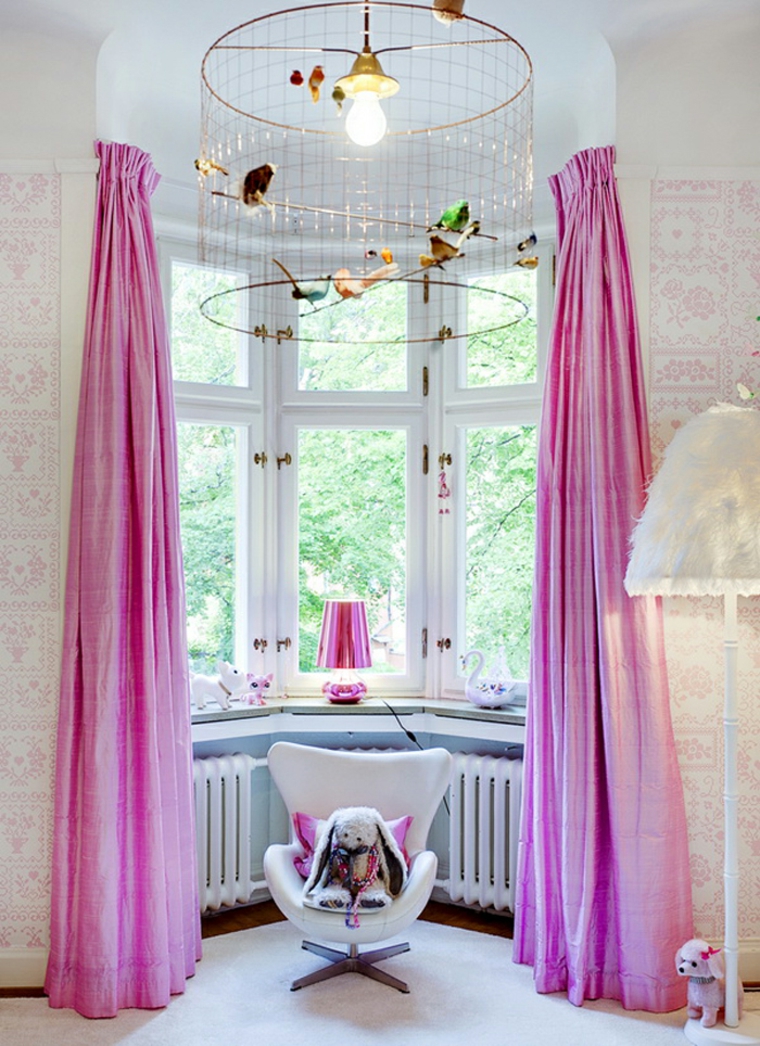
Take a look at these great wallpaper ideas for kids rooms for inspiration. Some of our contemporary wallpaper design ideas or gray wallpaper ideas may also be suitable.
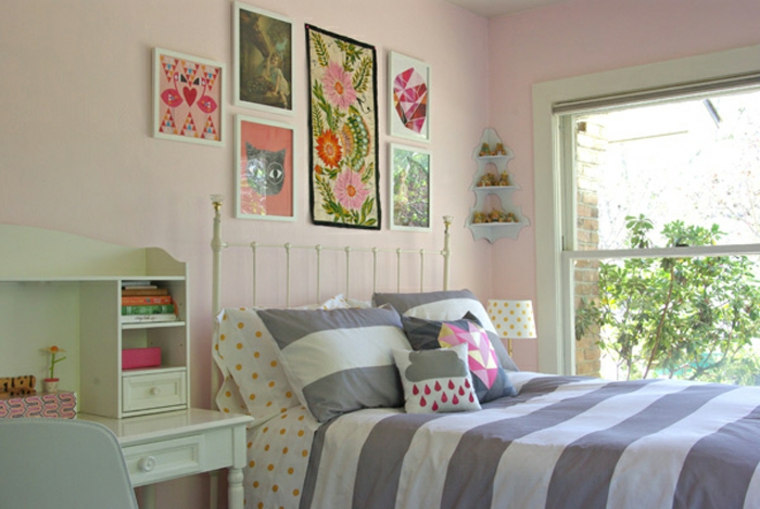
Murals are another eye-catching alternative. They work like an entire wall created with wallpaper, but you can size the layout (rather than working with standard wallpaper rolls and pattern matching). The themes of the entire wallpaper murals include animals, birds, maps and tables, astronomy or architecture images, as well as different patterns.
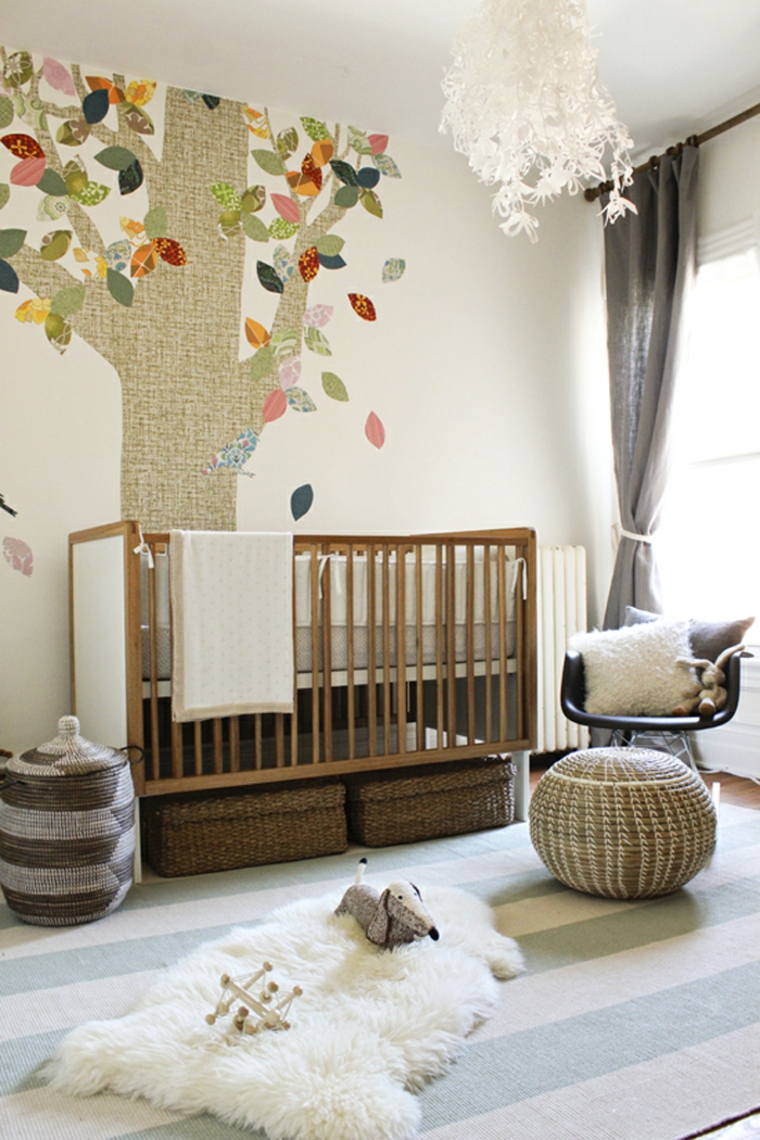
Wall Decal Decoration
Easier to use, wall decals can add an original touch to children’s bedrooms and are easy to remove when they get tired of the design. In stores there are many options available to please children from nursery age to teenagers, so they are not just for the little ones. Be bold in decorating, either with a single image or by creating a theme group.

Choose the right carpet or flooring for children’s bedrooms
A key part of the children’s bedroom design process is thinking about what type of flooring will be the most appropriate. The options include:
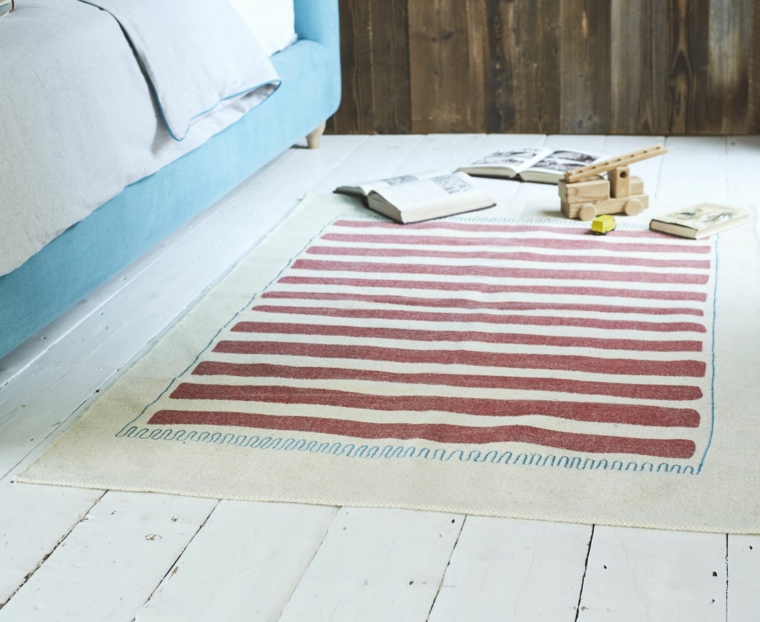
Rug
Warm and comfortable underfoot, the rug is also perfect for sitting down to play or read. It will cushion falls and reduce noise when objects fall. It can also provide effective noise isolation for neighbors.
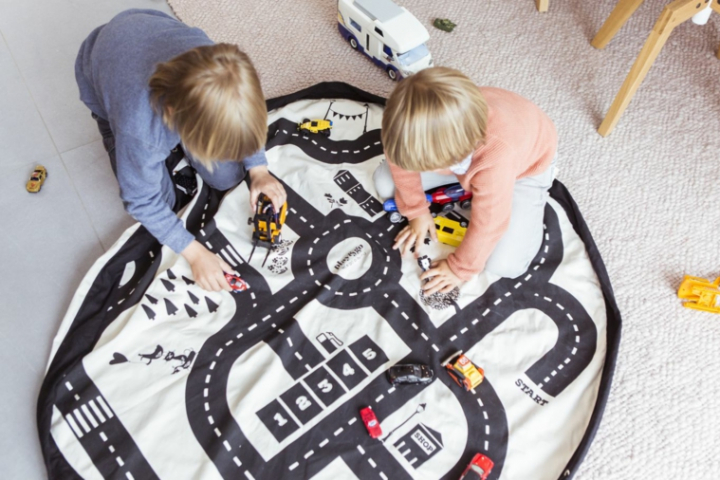
On the downside, carpet can get stained, so spills should be dried immediately and then gently cleaned. Polypropylene is resistant to dirt and stains and is often marketed for children’s bedrooms, but a handmade 80% wool and 20% fiber rug is durable, resistant to moisture and dirt, so it doesn’t discard if you prefer to increase the presence of natural materials.
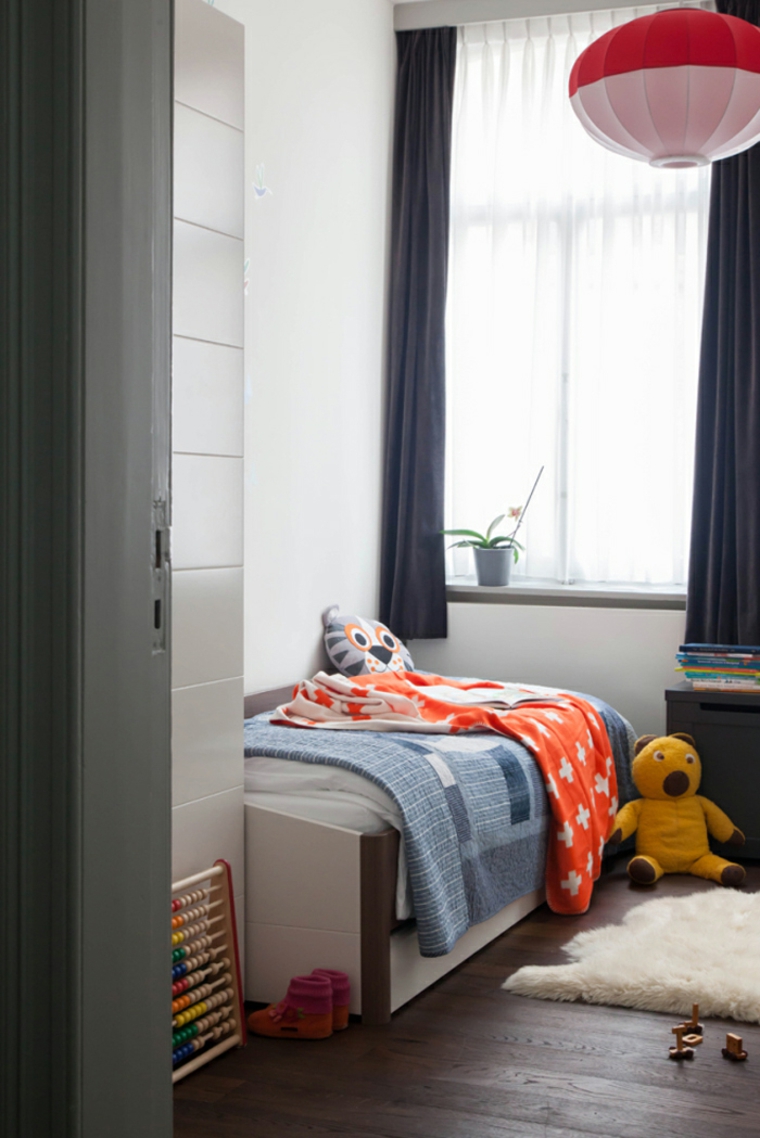
If your child suffers from allergies, the use of rugs is not recommended; instead, try one of the following hard flooring options.
Vinyl
Good quality vinyl is warm, strong, easy to clean, and relatively smooth as a surface. It is available in bright colors, if you want the floor to be the center of attention, as well as more neutral tones, and you can go for the natural look if you choose wood-look vinyl.
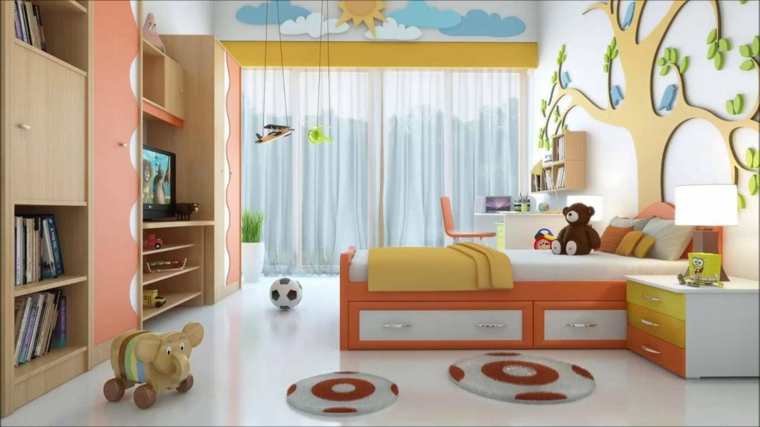
Rubber
In addition to being practical and attractive, rubber is soft, comfortable and a truly durable surface that is easy to keep clean. It also provides good sound insulation. There is a wide variety of colors, so we guarantee that you will find an option to suit your space.
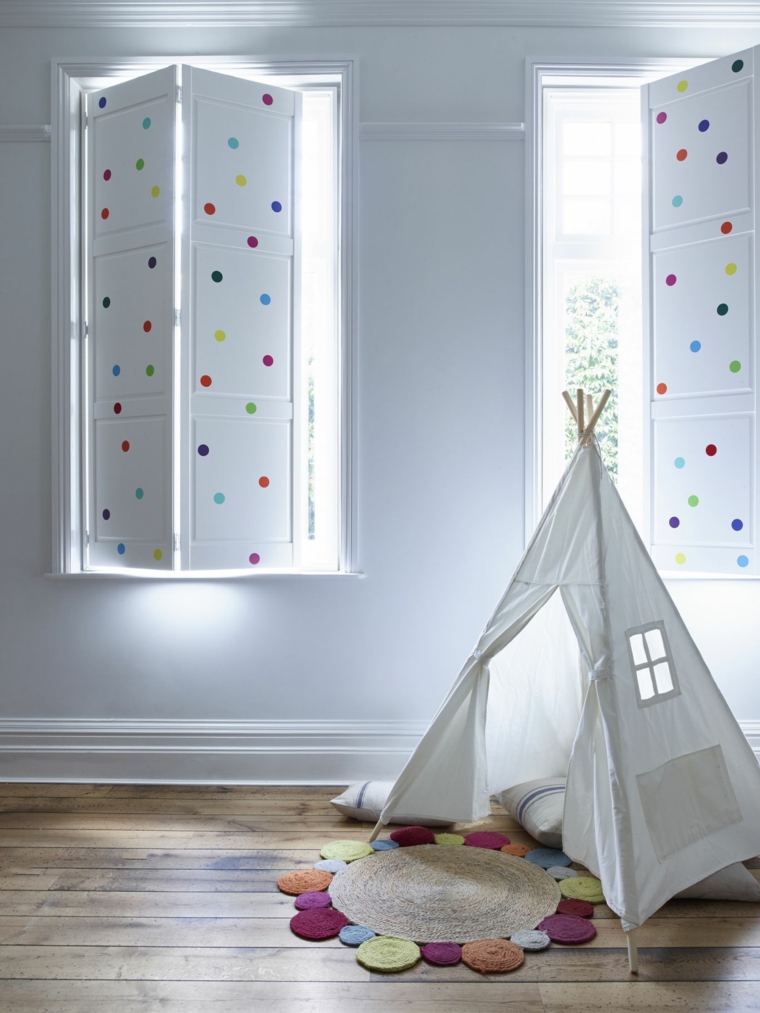
Laminate
Laminate is a functional flooring alternative for children’s bedrooms. A good quality laminate will resist wear and tear and is easy to maintain.
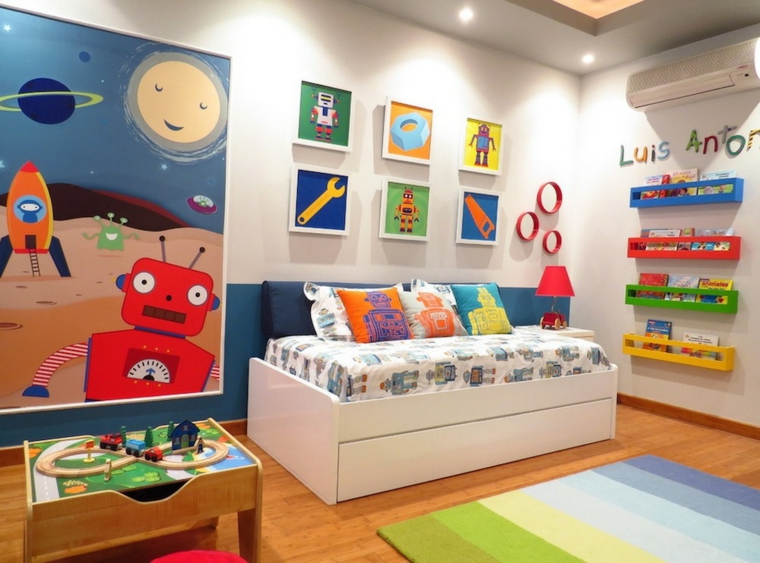
Wood
Natural and easy to keep clean, wood is a popular choice for children’s bedrooms. Solid wood and good-quality hardwood floors can be sanded and restored if worn, so they last for many years and the wood will continue to look good as other items in the room change. Although wood has some shock absorption capacity, it cannot be compared to carpet and will be louder.
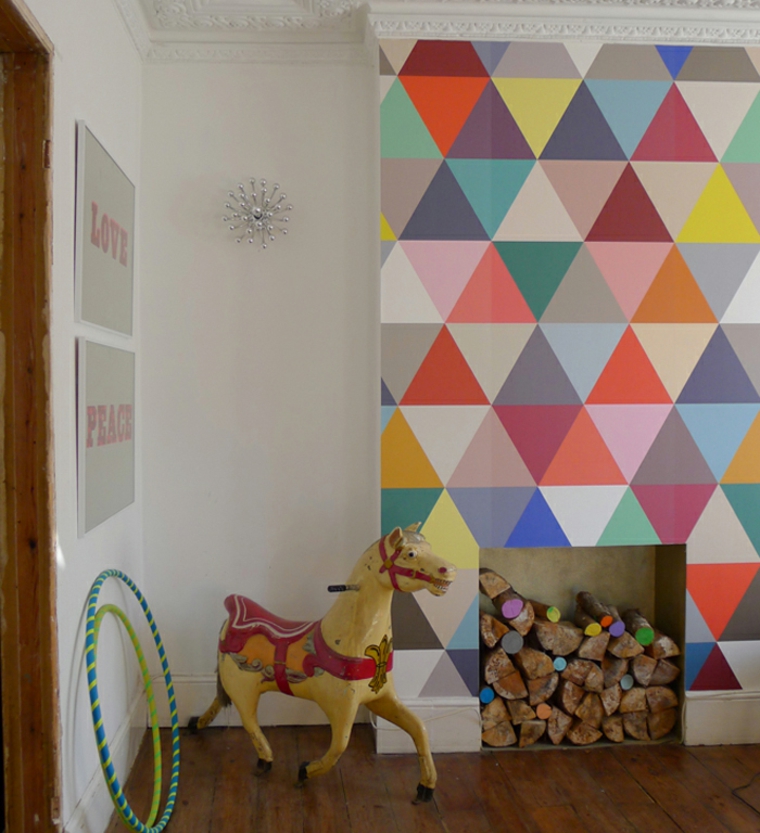
Kid’s Bedroom Mats
If you choose the option of hard floors such as wood or laminate for your child’s room, or if you want to vary a smooth, carpeted floor, place a mat on top. Flat-weave or low-pile rugs are easier to keep clean, and both wool and cotton are soft, durable, and pleasant to the touch.
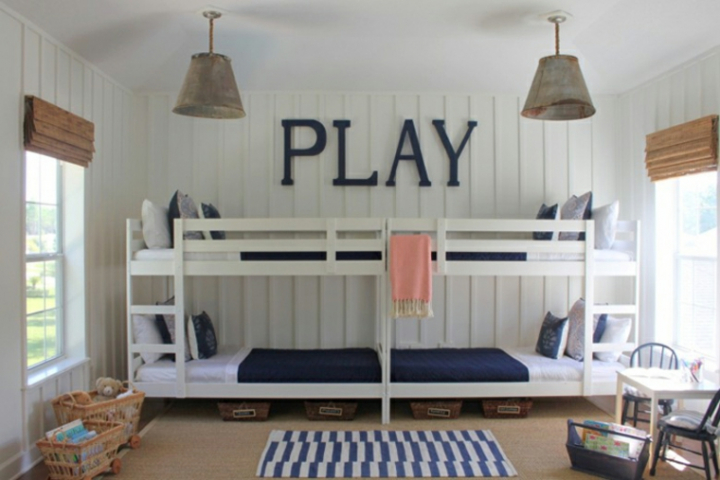
Whichever type of mat you choose, it is vital to ensure that it does not slip. Base layers and covers designed for this purpose will prevent accidents.
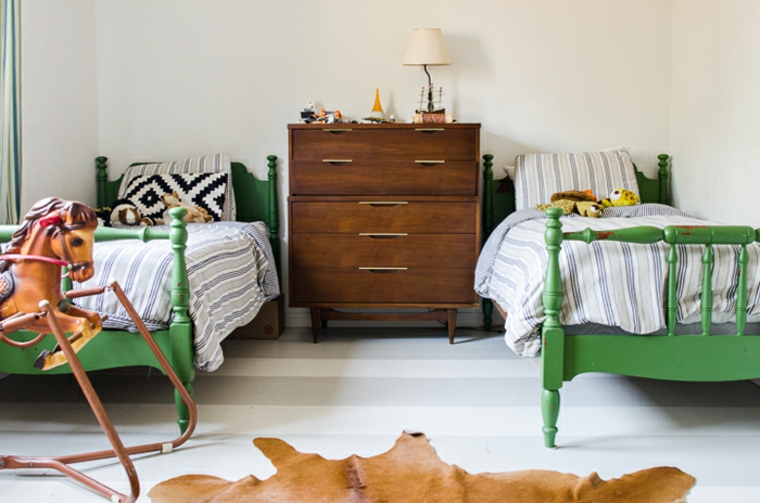
Children’s bedroom rug designs range from themed (which may only be a hit for a very short time) through traditional motifs like stripes, spots, and stars, to color blocks that don’t compete with patterned wallpaper. Once again, so that the decoration lasts longer and does not inflate the budget, the key rule is that the more classic the design, the better.
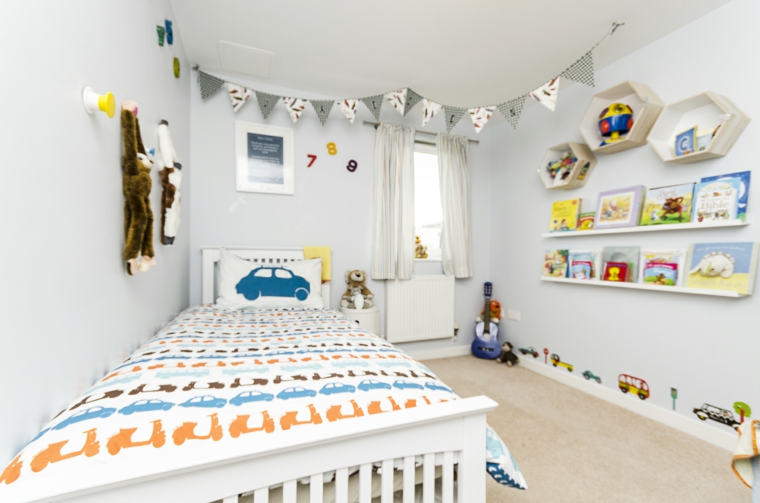
Curtains for children’s bedrooms
Another thing to consider when designing a children’s room is the choice of curtains and blinds. Consider what window options will work best with your scheme, as well as how much light you want to block or let in; this will vary depending on whether the room is facing north or south.
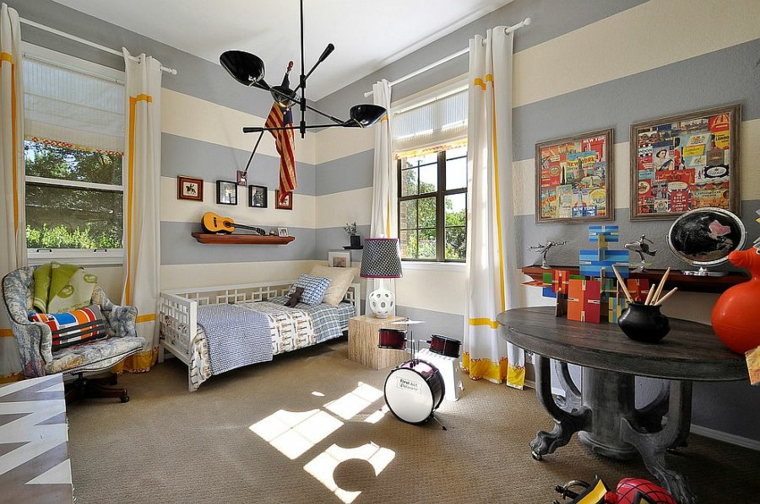
Blinds
Solid blinds are very effective at blocking out daylight and preventing sleep disruption, making them a particularly strong competitor for younger children’s nurseries. They are available in many colors as well as wood finishes. Both these blinds and sheer blinds will look good and will last for many years.
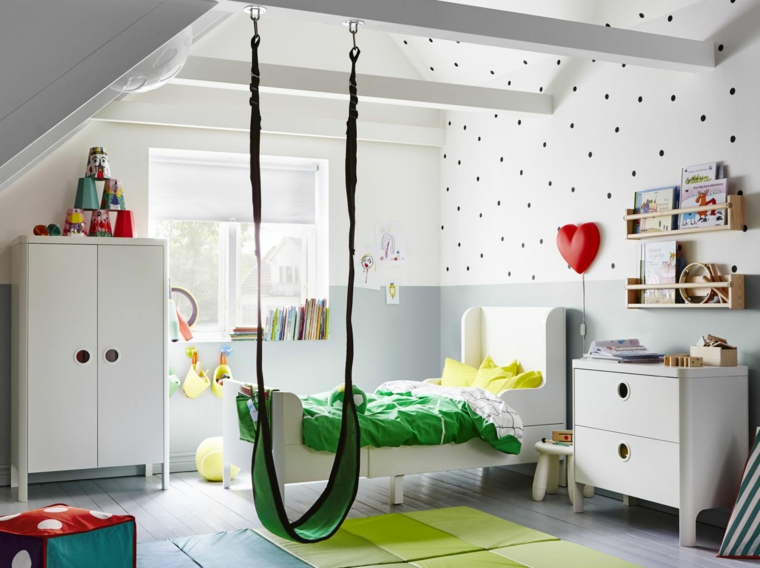
Choose blackout blinds to block light effectively or choose a more decorative fabric with a blackout lining. Venetians offer good light control and can help prevent glare on screens. Spring-operated or motorized blinds are designed to be safe for children, as are those with detachable drawstrings.
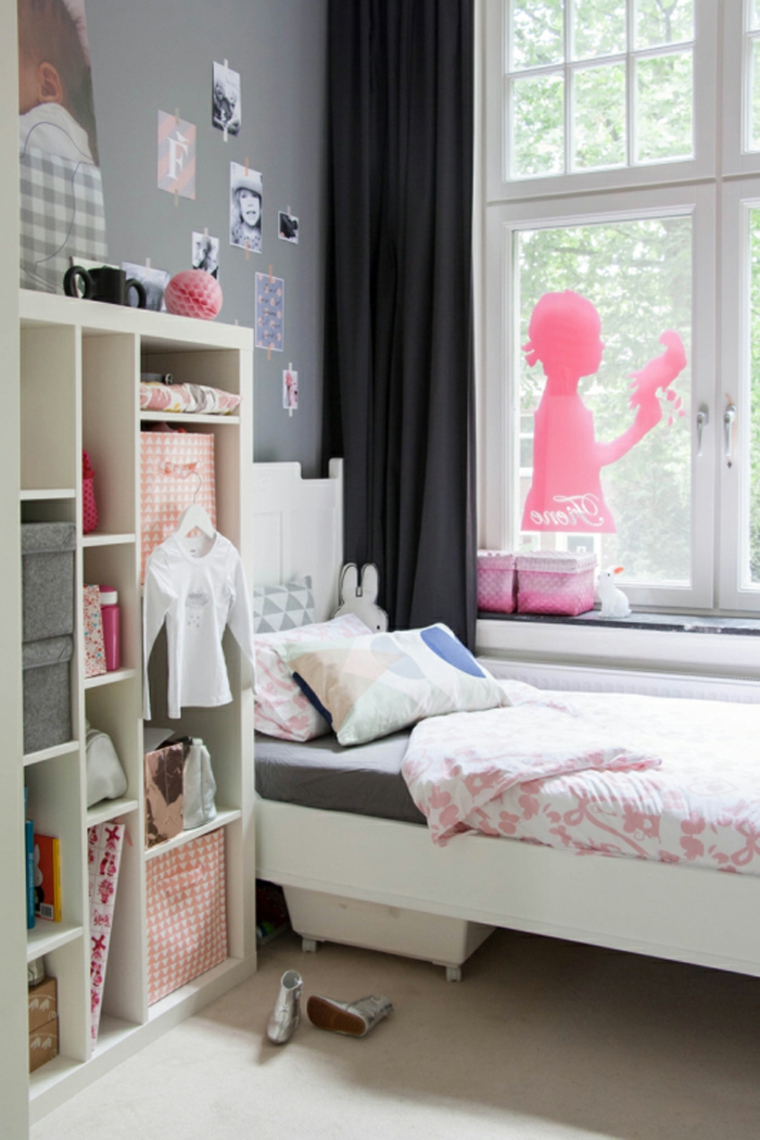
Curtains
Curtains are perfect for bringing a pop of color or pattern to a child’s room. However, cleaning will take longer than required for blinds or blinds other than fabric.
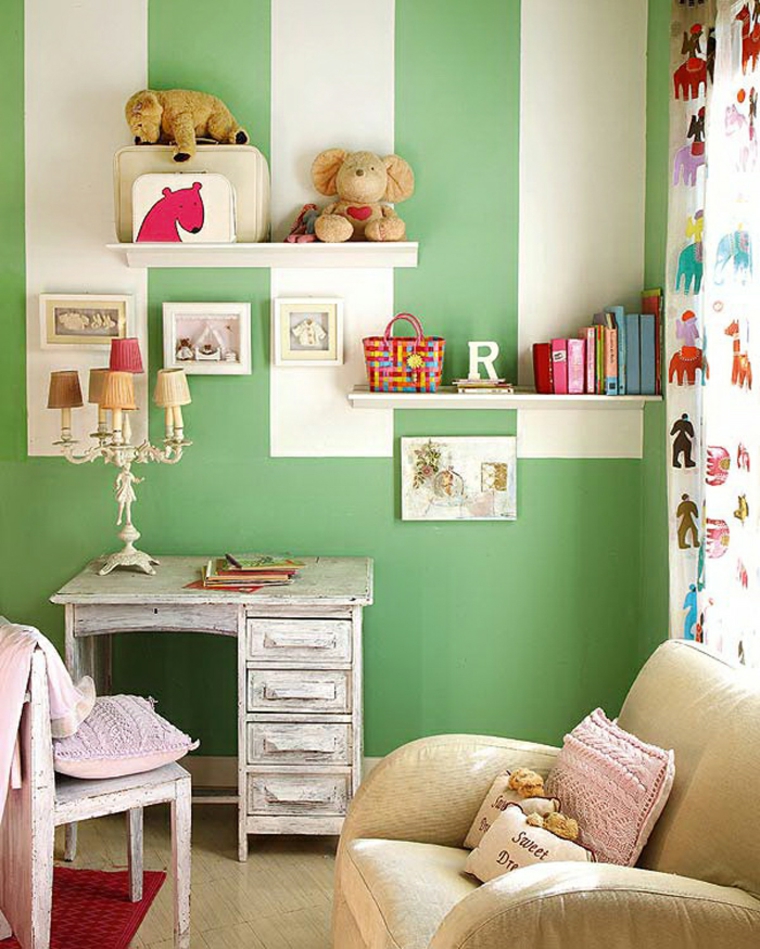
Blackout lining is available, but it won’t block all light, so pair it with a blackout blind to darken the room.
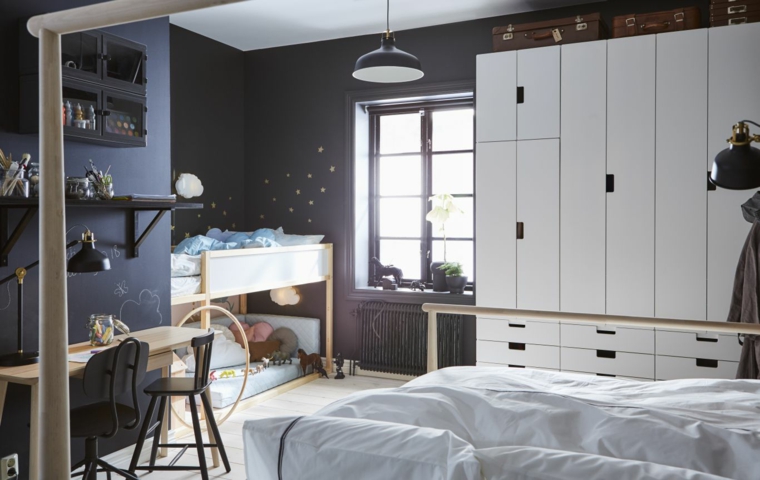
What lighting is suitable for children’s bedrooms
As in other rooms, children’s bedrooms should have a variety of light sources for flexibility. Some of them are worth thinking about during the early stages of a child’s room design, while others may be additions and later.
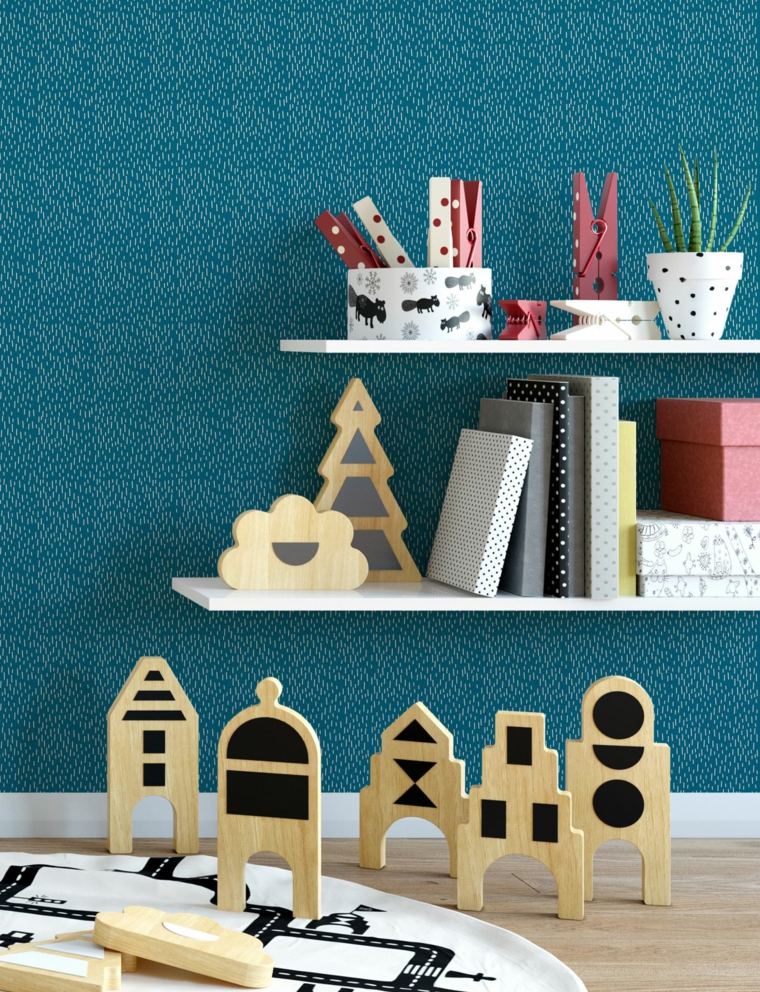
Ambient light for the room is usually provided by a ceiling pendant, low beams, or track lights. You may want to hang a pendant in an attractive shape (to cast interesting patterned shadows) or in a beautiful color. If the design leaves the room without strong enough overhead lighting, supplement with lowlights.
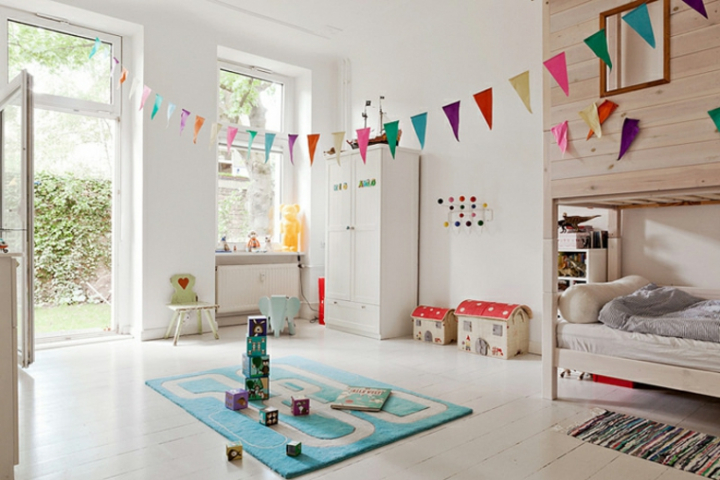
Night lights may need to provide different functions at different stages. For younger children, a night light can provide comforting lighting. At school age to read a bedside lamp that is strong enough to avoid eyestrain is vital. The bulb should be rated at around 400 lumens.

Desk lights should illuminate the entire desk area, including computer screens, and the larger the desk span, the taller the lamp should be. A model that can be tilted at an angle is useful for directing the light into the current work area, be it screen or paper. Children need less light than adults, but they are looking for 450-900 lumens.
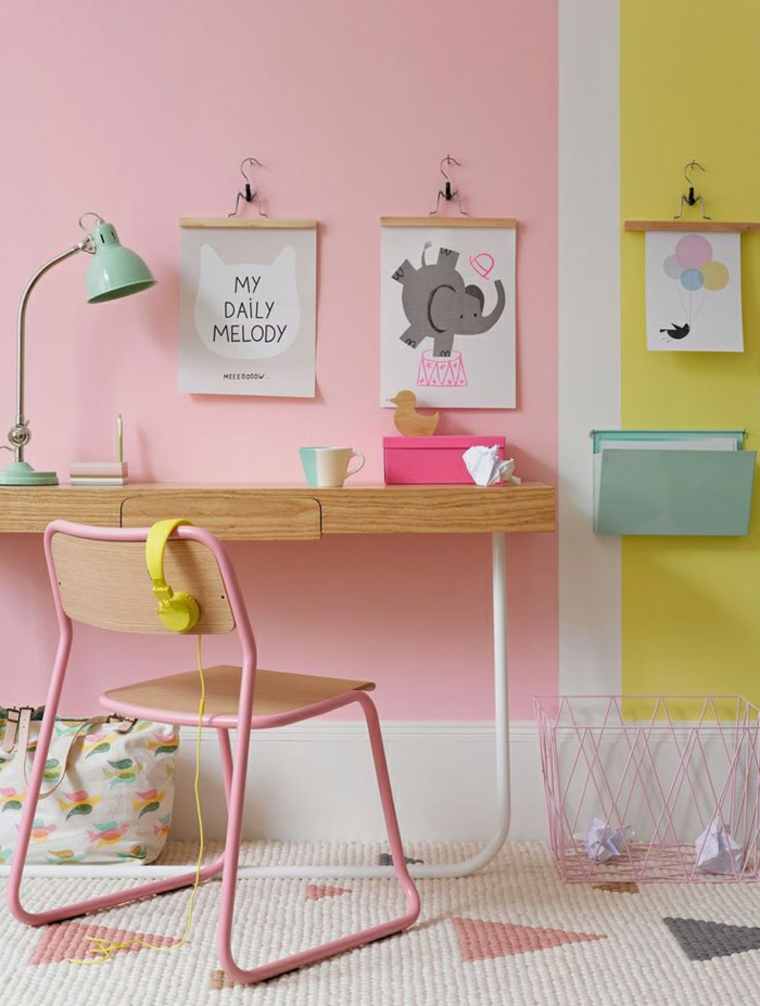
Decorative lighting can be a great way to personalize your design. Fairy lights surrounding the bed frame or LED strips are inexpensive ways to keep up with the changing tastes of children.
